Article from the section “Calendar of work for gardeners, market gardeners, flower growers.”
Every May day brings new colors, new forms to our garden, and I don’t want any of it metamorphoses passed us by. The shortcomings that spring revealed will not pass us by either. Some plants I want to replant, some I want to divide
What work will flower growers have to do in May?
Your flower garden: work of the month
But in May we do all this with caution. If we replant plants, especially those that bloom in spring - early summer, then be sure to include a large lump of earth. Only fall-blooming plants can be divided and planted without danger.
Well, all the flaws of our “designer’s” imagination will have to be covered up with annuals; fortunately, early May is a favorable time for sowing many of them. We sow empty spaces along the paths with low-growing annuals.
The openwork leaves and miniature yellow-brown flowers of Tagetes thin-leaved will look good close up. It is still rarely found in gardens, replaced by larger relatives - Tagetes deflected, Tagetes erecta.
Flowers of warm shades and sanvitalia, whose shoots fill all the free space around, at the same time without interfering with the growth of taller neighbors, beautifully “crawl out” onto paths and borders. Lovers of discreet beauty will also like the white baskets of Japanese zinnia.
It differs from its taller (and still rude) brothers not only by its miniature size, but also by some kind of external touchingness. Each flower flaunts on low shoots for many days. As they fade, white and pink daisies hide in the thicket of growing leaves.
The delicate haze that graceful gypsophila creates during flowering will make the area where lilies grow elegant.
And it’s okay that these and other annuals with medium-sized, graceful flowers will slightly push the favorite petunia into the background. She is beautiful, but still clumsy, and, like a painting made with oil paints, it is better to look at her a little from afar.
Fantasize, mentally create blooming pictures of a summer garden, and reality will exceed your expectations.
If you are not going to dig up tulip bulbs, you can plant seedlings of annuals between the fading plants: as they grow, they will hide the drying leaves of spring favorites. In hot summers, regular watering, which is necessary for annual flowers, will not harm retired tulip bulbs.
But such combined plantings are still not the rule, but the exception: it is better to dig up tulip bulbs, especially highly decorative varieties, every season, waiting until the leaves turn yellow and begin to dry out.
In their place, you can plant seedlings of annuals, or sow the area with phacelia: a very decorative and useful plant.
But daffodils, crocuses, and other small-bulbous primroses are dug up only after they have grown into a dense curtain and begin to bloom worse
Work on planting flower seedlings
In May, it is time to plant flower seedlings grown indoors or in greenhouses in open ground. But before that, gradually accustom it to the open sun and wind, otherwise after planting many plants may be missing.
This is especially true for seedlings that were grown not in individual cups, but in a common seedling container: the roots of such plants are inevitably disturbed during transplantation. It is better to plant seedlings in the evening or on a cloudy day, shade them with light non-woven material for 1-2 days.
Additional seedlings can be obtained by thinning the April crops of annuals. And it is imperative to thin out dense crops in order to get truly decorative bushes, and not frail blades of grass stretching out into one stem and interfering with each other.
We don’t pull out the extra plants, but carefully dig them up with a lump of earth and plant them in places where the seeds have not sprouted well.
Feed your perennials
Be sure to feed perennials in May. Now they will not be disturbed by organic infusions (1:10), solutions of complex fertilizers for spring application (a tablespoon per bucket of water). We feed taking into account the age of the plants: the older and more powerful the bush, the more nutrition it needs.
For example, for a five-year-old peony bush we use a bucket of organic infusion and the same amount for 3-4 young bushes. We feed less powerful perennials (phlox, astilbe, lychnis, invulberry, etc.), using a liter of nutrient solution per plant.
In the second half of May, you can feed the germinated dahlias planted.
In May, the soil will already have warmed up enough and it can be mulched around the plants so that it is moist all the time, allows air to pass well to the roots and does not overheat.
How to water flowers
Even May does not often bring joy with rain and protects from heat, so watering is already necessary at this time. The following need regular moisturizing:
- daisies
- pansies
- aquilegia
- delphiniums
- gladioli
- dahlias
- clematis.
But mallow and gaillardia can wait. Annuals also have different requirements. If sweet peas, lobelia, nastrutia do not like drying out, then cornflower, verbena, dimorphotheca, purslane, eschscholzia, zinnia, scabiosa are considered relatively drought-resistant plants.
We are finishing planting gladioli corms. We will definitely find a place where they have not grown for several years.
At the beginning of May we plant canna rhizomes and dahlia tuber roots.If they were grown warm before planting, we stock up on covering material to protect the young leaves in case of return frosts.
With the onset of hot weather (and in May it can reach +30) a “fun” life begins for those who have lawns: watering twice a week, manually removing growing weeds once a week and cutting the grass.
We cut out the rose hips from the grafted roses. To do this, we rake a little soil from the sprouted shoots, pull the shoots out of the ground and cut them out with a sharp pruner as close to the rose bush as possible.
Caring for peonies
Peonies preparing to bloom in May will also require intervention. If we want to get especially large flowers, we leave only one of the largest buds on each stem and pinch off the rest.
If we are not going to cut peonies for bouquets, we pinch out only the smallest buds: before the heat sets in, they still won’t have time to bloom - they will dry out, and the juices will be drawn from the bush.
For bouquets, we cut off peonies at the stage of half-opened buds, leaving as many leaves as possible on each. Without them, plants will not be able to store enough plastic substances in their rhizomes to initiate and form new buds.
Installing supports for climbing flowers
We don’t put off until later the installation of supports for climbing plants. Morning glory, sweet pea, quamoclite and other vines will need a trellis almost immediately after germination. Without it, the plants will begin to cling to each other and intertwine with each other.
It will not be possible to disengage them without damage, and the “harnesses” and “braids” do not look very decorative. For clematis and campsis, solid supports made of reinforcement and pipes are needed, and for annual vines, a plastic mesh (sold in any country store) will do.
Start landscaping your balconies
In May, you need to find time to plant landscaping on your balcony or loggia. You can abandon traditionally grown petunias and pelargonium in favor of aromatic plants: parsley, celery, basil.
Curly parsley looks very impressive. From basil, if you place several varieties with leaves of different colors in one balcony box, you can create a mini-flower bed without flowers. And the fact that the branches will have to be cut for salads and soups will only add decorativeness to the basil bushes.
Plants can be planted in separate pots, placed in one balcony box and sprinkled with sawdust or peat to prevent the roots from overheating. With regular pruning (we don’t let the basil bloom), the aromatic plants will remain decorative until late autumn, and if you bring the pots home, they will provide herbs even in winter.
We move indoor plants to the balcony, loggia or even to the garden. True, not all. Impatiens, ferns, asparagus, fuchsias, eucharis can only be taken out onto a glazed balcony or loggia and shaded so that their delicate leaves are not damaged by the wind and sun.
Even “thick-skinned” fat plants, cacti, euphorbia, and aloe cannot be exposed sharply to the sun; they must also be shaded from direct sunlight. But diffused light is good for them.
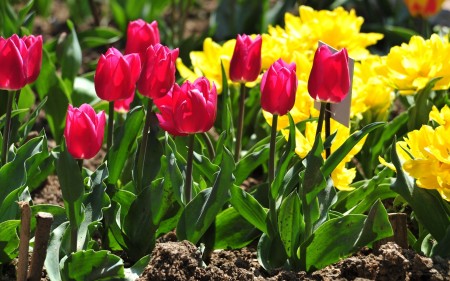

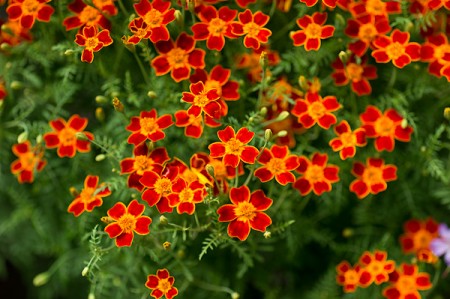
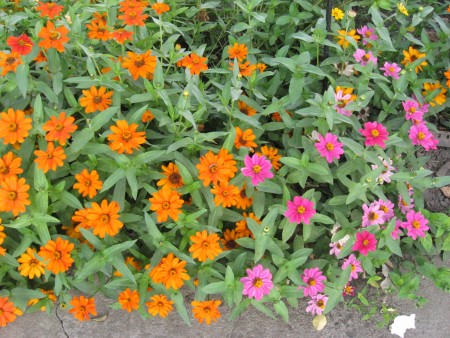

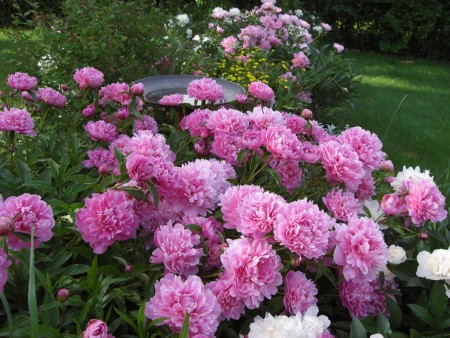
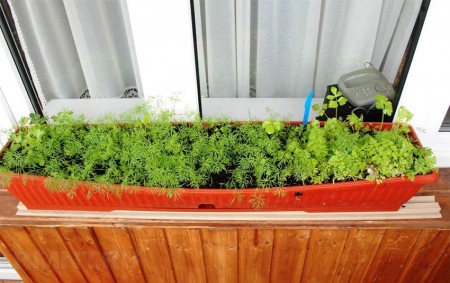

 (7 ratings, average: 4,00 out of 5)
(7 ratings, average: 4,00 out of 5) CUCUMBERS NEVER GET SICK, I'VE BEEN USING ONLY THIS FOR 40 YEARS! I SHARE A SECRET WITH YOU, CUCUMBERS ARE LIKE THE PICTURE!
CUCUMBERS NEVER GET SICK, I'VE BEEN USING ONLY THIS FOR 40 YEARS! I SHARE A SECRET WITH YOU, CUCUMBERS ARE LIKE THE PICTURE! You can dig a bucket of potatoes from each bush. Do you think these are fairy tales? Watch the video
You can dig a bucket of potatoes from each bush. Do you think these are fairy tales? Watch the video
 How our fellow gardeners work in Korea. There is a lot to learn and just fun to watch.
How our fellow gardeners work in Korea. There is a lot to learn and just fun to watch. Eye trainer. The author claims that with daily viewing, vision is restored. They don't charge money for views.
Eye trainer. The author claims that with daily viewing, vision is restored. They don't charge money for views. A 3-ingredient cake recipe in 30 minutes is better than Napoleon. Simple and very tasty.
A 3-ingredient cake recipe in 30 minutes is better than Napoleon. Simple and very tasty. Therapeutic exercises for cervical osteochondrosis. A complete set of exercises.
Therapeutic exercises for cervical osteochondrosis. A complete set of exercises. Which indoor plants match your zodiac sign?
Which indoor plants match your zodiac sign? What about them? Excursion to German dachas.
What about them? Excursion to German dachas.